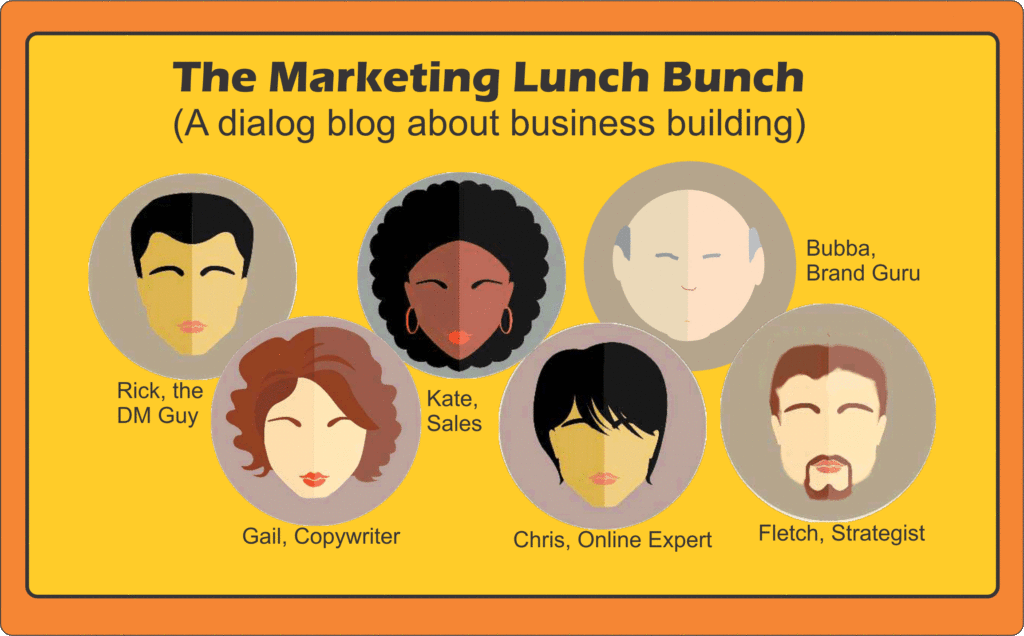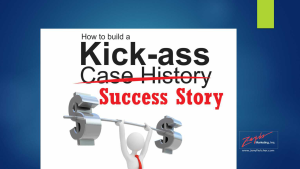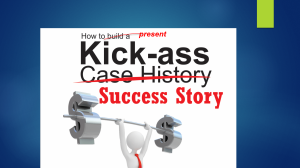 “It’s not a new idea” Kate said, “So don’t try to take credit.”
“It’s not a new idea” Kate said, “So don’t try to take credit.”
 Rick groaned, took another sip of wine and nodded. Then he rose to the bait saying, “I know I didn’t invent the idea but at least give me credit for figuring out how to apply it to the funnel hacking e-marketing world we live in.”
Rick groaned, took another sip of wine and nodded. Then he rose to the bait saying, “I know I didn’t invent the idea but at least give me credit for figuring out how to apply it to the funnel hacking e-marketing world we live in.”
“So what brilliance did you come up with?” I asked.
“Daily déjà-vu of simultaneous synchronized multi-variant testing of multiple elements is my claim to fame,” he said.
 Gail guffawed looked him in the eye and said, “What a mouthful! Rick, my boy you are brilliant at times but this is not one of them. You know as well as I do that direct marketing copy controls have been tested every which way you can imagine over the years and that something as simple as an A-B split test is so easy online that anyone that can afford the software or the service can get it done. So what are you claiming?”
Gail guffawed looked him in the eye and said, “What a mouthful! Rick, my boy you are brilliant at times but this is not one of them. You know as well as I do that direct marketing copy controls have been tested every which way you can imagine over the years and that something as simple as an A-B split test is so easy online that anyone that can afford the software or the service can get it done. So what are you claiming?”
 Kate piled on noting, “And don’t try to pull that tale of having to dumb down your ideas of how to test that the programmers couldn’t figure out 10 or 15 years ago because Fletch was sitting beside you in that meeting you’ve told me and as I recall he’s the one that had to explain what an A-B split test was.”
Kate piled on noting, “And don’t try to pull that tale of having to dumb down your ideas of how to test that the programmers couldn’t figure out 10 or 15 years ago because Fletch was sitting beside you in that meeting you’ve told me and as I recall he’s the one that had to explain what an A-B split test was.”
Rick swished his wine in the glass, carefully set it down and replied, “You all would agree that we need to find out the  relative importance of the offer, the list of people you are addressing and the approach. That principle is true of direct marketing, e-mail marketing, e-commerce stores/catalogs on-line or even a web site developed to begin a relationship for a professional service.
relative importance of the offer, the list of people you are addressing and the approach. That principle is true of direct marketing, e-mail marketing, e-commerce stores/catalogs on-line or even a web site developed to begin a relationship for a professional service.
My approach takes the ability of the internet to produce quantifiable data quickly and the need to look a multiple components of the message to new levels. There are entrepreneurs out there right now that are pushing the envelope. They test everything. They find a control that works and then start testing to improve it. Sometimes as simple shift can increase ROI by hundreds of points.
What are you doing to make your web-based marketing activities more successful? Why not try tests of formatting, subject lines, subheads, arrangement of paragraphs, captions, descriptions, addition or deletion of photos and a host of other variables. There is hard data that shows that at least half of these have increased response levels.
The time to test what works for your business is right now. And tomorrow. And the day after.
Testing ought to be Deja-vu, over and over again.”
Jerry Fletcher weaves the tales of the Lunch Bunch based on his experiences in advertising, direct marketing, consulting and helping build entrepreneur businesses.
 Jerry Fletcher is a beBee ambassador, founder and Grand Poobah of www.BrandBrainTrust.com
Jerry Fletcher is a beBee ambassador, founder and Grand Poobah of www.BrandBrainTrust.com
His consulting practice, founded in 1990, is known for Trust-based Brand development, Positioning and business development on and off-line. He is also a sought-after International Speaker.
Consulting: www.JerryFletcher.com
Speaking: www.NetworkingNinja.com
Get all the Brand Success Stories. Sign up at http://www.brandbraintrust.com/home.html











